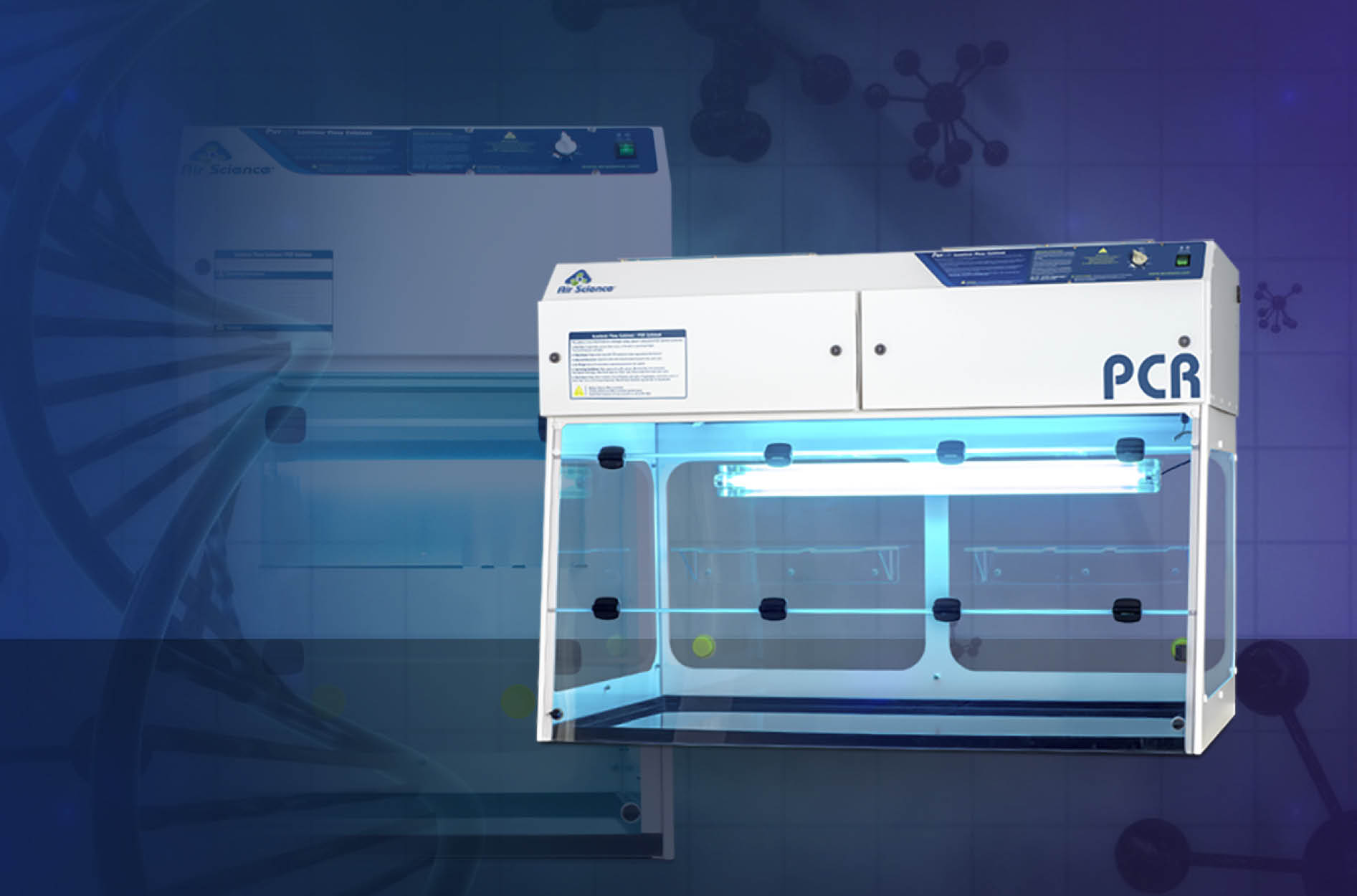
- christina
- Comments Off on The Ins and Outs of PCR Cabinets
- BLOG, Life Science
What is a PCR cabinet and why is it used?
A PCR cabinet, also known as a PCR workstation, is a vertical laminar flow cabinet specifically designed for PCR equipment. PCR laminar flow cabinets, or laminar flow hoods, help prevent cross-contamination that adversely affects samples. PCR cabinets are essential laboratory equipment for highly sensitive PCR (Polymerase Chain Reaction) amplification applications.
What are some of the advantages of PCR cabinets?
PCR laminar flow hoods can be used to help protect samples from cross-contamination. As a laminar flow hood, PCR cabinets use HEPA/ULPA-filtered air that flows downward, uniformly via laminar flow, safeguarding your amplifications from being contaminated by airborne particulates. PCR cabinets include UV lamps, which are used during the intervals between PCR cycles to eliminate RNA and DNA contamination within the cabinet.
Air Science Purair PCR workstation enclosures provide a safe, energy-efficient, contamination-free environment during PCR amplification. The Purair PCR workstation is designed to provide flexible access to the thermocycler.
What is the difference between a dead air box and a PCR hood?
Dead air boxes are aptly named. They provide an environment free from air circulation. Dead air boxes are also equipped with a UV light to provide decontamination between amplifications. However, dead air boxes do not protect against airborne particulate contamination during PCR amplification.
PCR hoods also use UV lamps to provide decontamination between amplifications. However, they have the added benefit of protecting against contamination introduced via airborne particulates. PCR hoods use unidirectional, filtered air to capture airborne particulates and help prevent false results in PCR amplification.
Learn more about Air Science PCR Laminar Flow Cabinets.